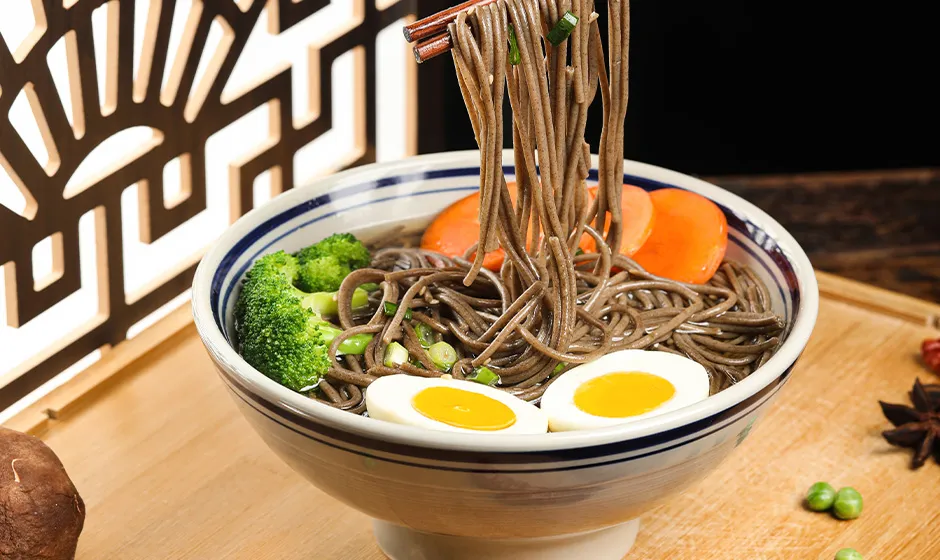Exploring the Key Differences Between Soba and Udon Noodles
The Difference Between Soba and Udon
When it comes to Japanese cuisine, two types of noodles that often capture the attention of food enthusiasts are soba and udon. While they may seem similar at first glance, these two noodles offer unique flavors, textures, and characteristics that appeal to different preferences. This article explores the key differences between soba and udon, revealing what makes each noodle special.
Origins and Ingredients
Soba noodles are made from buckwheat flour, which gives them a distinctive nutty flavor and a dark brown color. Buckwheat, despite its name, is not a type of wheat and is actually a seed that is gluten-free, making soba a popular choice for those with gluten sensitivities. Soba noodles can vary in texture, with some being incredibly fine while others are thicker. They are often associated with regional specialties in Japan, particularly in the Nagano Prefecture, where the cool climate is conducive to buckwheat cultivation.
In contrast, udon noodles are made from wheat flour, water, and salt, resulting in a thick, chewy, and soft texture. Udon noodles are typically light beige in color and are known for their substantial mouthfeel. Udon is widely enjoyed throughout Japan, with regional variations in thickness and preparation. Some areas are known for their extra-thick udon, while others may serve it with unique broths or toppings.
Flavor and Texture
The flavor profiles of soba and udon noodles differ significantly. Soba has a unique earthy, nutty taste that can vary depending on the ratio of buckwheat flour to water used in the recipe. Its texture is also distinctive, offering a balance between smoothness and a slight bite. Soba can be served both hot and cold, with cold soba, often accompanied by a dipping sauce, being particularly refreshing during the summer months.
difference between soba and udon

Udon, on the other hand, has a more neutral taste due to its wheat-based composition, allowing it to absorb the flavors of the broth and accompanying ingredients. Its chewy texture makes it satisfying to eat, and it is typically served in hot soups with various toppings such as tempura, green onions, and tofu. While udon is usually enjoyed hot, it can also be served cold, particularly in summer dishes.
Preparation and Dishes
Both soba and udon can be prepared in a variety of ways, making them versatile staples in Japanese cuisine. Soba is frequently served cold, often with a dipping sauce called tsuyu made from soy sauce, mirin, and dashi. It can also be served in a hot broth, commonly paired with vegetables, meats, or fish, creating a heartwarming meal.
Udon is predominantly served in soup, where the noodles are cooked in a flavorful broth, which can be made from dashi (a Japanese stock), soy sauce, and mirin. Common udon dishes include kitsune udon, topped with fried tofu, and yaki udon, which is stir-fried with vegetables and meat. Udon can also be enjoyed cold, served with dipping sauces during the hotter months, just like soba.
Conclusion
In conclusion, while soba and udon are both integral parts of Japanese culinary traditions, they are distinct in their ingredients, flavors, textures, and preparations. Soba offers a nutty flavor and is often served cold, while udon focuses on a chewy texture and is more commonly found in warm broths. Whether you prefer one over the other may come down to personal taste, but both noodles provide insight into the rich tapestry of Japanese cuisine and are worthy of exploration.
-
Unleash Your Inner Chef with Delectable Italian Pasta CreationsNewsAug.01,2025
-
Savor Health and Flavor: Irresistible Soba Noodles for Sale Await!NewsAug.01,2025
-
Nourish Your Body with Premium Organic Ramen - A Culinary Delight AwaitsNewsAug.01,2025
-
Elevate Your Dishes with Our Exquisite Kinds of Egg NoodlesNewsAug.01,2025
-
Dive into Flavorful Convenience with Our Ramen OfferingsNewsAug.01,2025
-
Discover Exquisite Types of Naengmyeon and Chilled Soba NoodlesNewsAug.01,2025
-
Is Whole Wheat Pasta Healthy?NewsMay.30,2025
Browse qua the following product new the we

















































































































